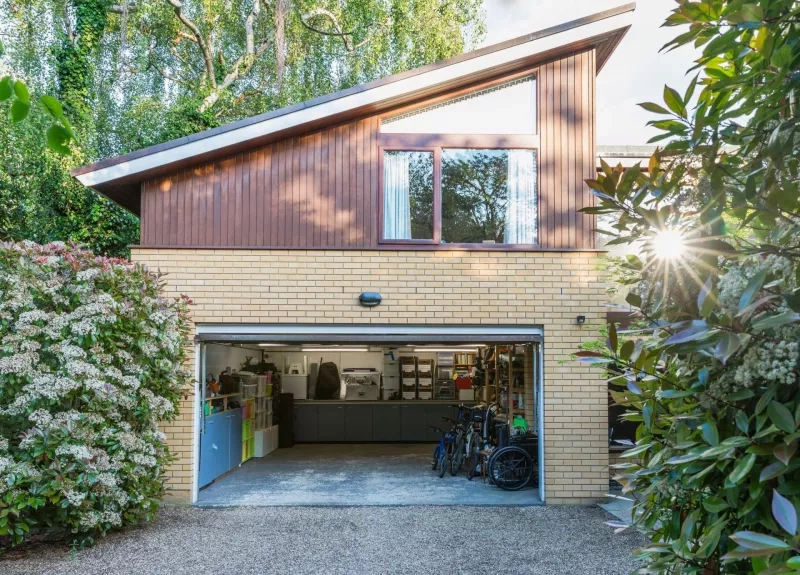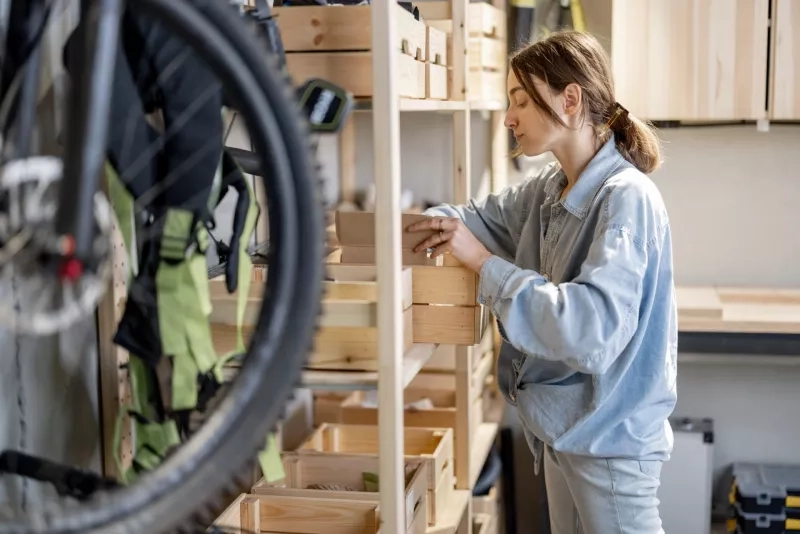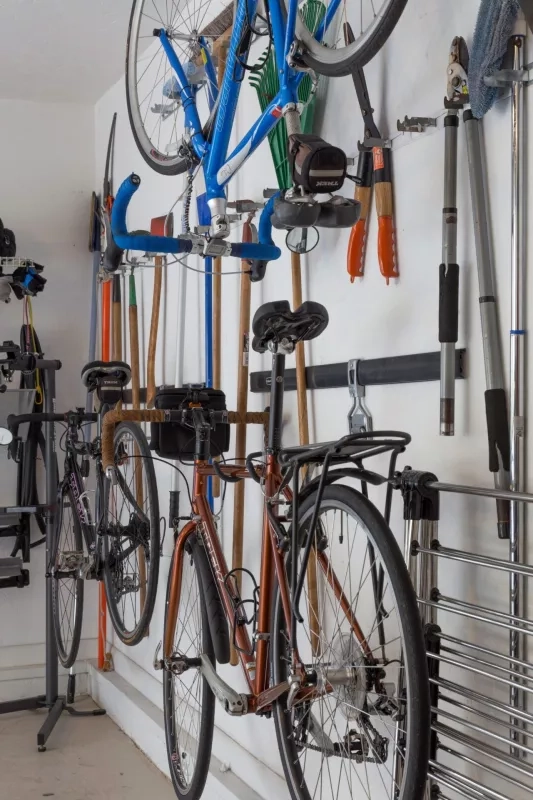
Garage storage made simple
2 Minute Read
If you're a homeowner with a garage, it makes sense to treat it as more than a dumping ground for sports equipment and seasonal items. These tips will help you make the most out of this valuable square footage, whether it's attached to your home or a few steps from the front door.
Go higher
Most residential garages have a ceiling height of about three metres, so owners can take advantage of vertical space and free up the floor. Many retailers sell shelving units that can be hung from the ceiling or attached to a wall to accommodate boxes or stackable bins.
When neatly sorted, open shelves can look just as nice as expensive cabinets, without the need for space-consuming doors. But, make sure to securely mount any shelving to wall studs or ceiling joists.
Rack it up

RossHelen | iStock
Proper storage of your seasonal tires can help free up floor space. Plus, investing in vertical racks made for tires has another advantage: extending the life of these expensive and essential safety items.
Proper storage of tires can prevent flats, sidewall damage and other inadvertent but harmful wear. Additionally, you'll assist the CAA technician when they arrive at your driveway to swap your vehicle's all-season tires or winter tires.
Wall of wonder

Patti McConville | Alamy
Grooved wall panels, which have horizontal slots and are sometimes referred to a slat walls, can be used to hang shelves or hooks to organize awkwardly sized items, like shovels and rakes. Add rubber-coated hanging pegs to store tools, ladders and bicycles, too.
Park your items
Many homeowners use their garages to house the seasonal tag team of lawn care and snow removal tools. To make sure this gear doesn't block your access, try parking it along the edge of your garage, with its square or flat features toward the wall.
Look up
Racks on the ceiling are another great way to manage space. But, if you're planning to hang items from the ceiling, consider investing in a side- or wall-mounted garage door opener. While clearance is still needed for the door and its track system, a side or wall-mount opener will free up more overhead space for things like bikes and seasonal items in bins or boxes.
Make a plan
To save time and frustration, jot down your garage measurements. Then, sketch out a plan of where items can be placed. Keep in mind what you need to access regularly and what is needed only seasonally. Use a pen and paper or any of the numerous free apps, such as Magicplan and Houzz. Or, try websites, like RoomSketcher.
A garage is not just a garage
If you do not plan to park your vehicle in the space, consider converting your garage into a functional room.
Here are four things to consider when reno-ing your garage:
Open-concept space
Make use of a garage's open nature. It's an ideal spot for a home office, gym, or theatre—features that could add valuable space to your residence.
Control the temp
Hire a contractor to properly insulate the walls and ceilings as some garages may have been built to different standards or regulations than the rest of your home. This will help keep the space at your preferred temperature.
Safety First
A contractor can arrange for the proper building permits and ensure that safety requirements are met. When in doubt, ask for help.
New lights and floors
Consider upgrading your garage flooring, and don't forget the lighting.
Review your policy
If you're transforming your garage into another room, make sure your home is fully protected by reviewing your policy with a licensed CAA Insurance Agent.




